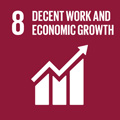- Docente: Michele Clementi
- Credits: 4
- Language: Italian
- Teaching Mode: Traditional lectures
- Campus: Rimini
- Corso: First cycle degree programme (L) in Statistics, Finance and Insurance (cod. 5901)
Learning outcomes
The course is structured into four parts.
In the first part, students will be introduced to the main alternative financial instruments (ETNs, ETCs, derivatives, etc.) through a practical and operational approach. Their use will be analyzed both for speculative purposes and to enhance portfolio efficiency, including the use of leverage for risk hedging (market and currency) and the creation of protected portfolios.
The second part focuses on financial planning, with in-class exercises and simulations involving client data collection. Students will learn how to build a properly diversified portfolio based on specific investment goals.
The third part involves portfolio construction using dedicated software tools. Students will assess the risk of various asset allocations they develop, aligning them with the client's risk tolerance.
In the fourth part, the course delves into financial analysis techniques for actively managing the portfolio in response to both exogenous and endogenous market events.
Course contents
The course aims to analyze the economic, financial, and asset dynamics of households through an experiential and interdisciplinary approach. The teaching activities will take place in the classroom and will begin with the observation of five distinct family units, whose interactions will generate complex and realistic scenarios.
Through these case studies, situations will be examined that test the economic stability and asset security of families: fluctuations in financial markets, unexpected personal events, marital crises, generational business transitions, inheritance successions, and other critical circumstances. These contexts will serve as a basis for exploring strategies for planning, managing, and protecting financial and real estate assets, with the goal of developing analytical and risk assessment skills.
The course includes the evaluation of the financial portfolios of the various subjects involved, with particular attention to their consistency with family and wealth planning objectives. In the final phase, the most suitable legal, insurance, and financial instruments will be analyzed to support asset protection and ensure an effective generational transfer.
Not only classical finance — portfolio management — but also a step forward into extraordinary finance: M&A, family agreements, trusts, stock market listing, family funds, holding companies, fiduciary arrangements, and more.
Readings/Bibliography
Recommended texts are suggested based on the student's interest, while for the lessons and exam preparation, the slides presented during the lessons are sufficient.
Teaching methods
The goal is to actively engage students in the lessons and specifically in the construction of portfolios according to the objectives of the personas being analyzed at any given time.
In addition to the slides, videos and websites are recommended for study and familiarity to provide points for reflection or valuable support for future research.
Assessment methods
The exam consists of a written multiple-choice test. Each question offers three possible answers, only one of which is correct. The test includes a total of 31 questions; each correct answer is worth 1 point, for a maximum possible score of 31 points.
To pass the exam, students must answer correctly at least 18 questions.
Teaching tools
Interested students can schedule a call on Teams with the prof. to further explore their interests related to the subject.
Office hours
See the website of Michele Clementi
SDGs




This teaching activity contributes to the achievement of the Sustainable Development Goals of the UN 2030 Agenda.
